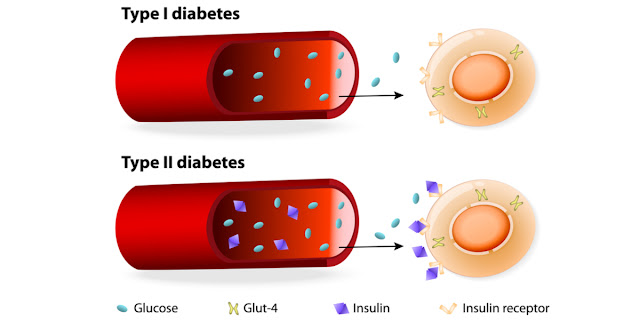Diabetes: Type 1 Vs Type 2
Diabetes is a
disease in which persistently or chronically elevated blood glucose levels
occur. There are two main types of diabetes: Type 1 Diabetes Mellitus (DM1) and
Type 2 Diabetes Mellitus (DM2). These two types of diabetes differ in the
causes that provoke them, the symptoms, the characteristics, the treatment, and
the age of the people it affects. We are going to review what its main
characteristics are and what distinguishes one from the other.
Type 1 diabetes (DM1)
Although type 1
diabetes can develop in adults, it is characterized by having a higher
incidence among young people and children. In this type of diabetes, the
patient's own immune system destroys the beta cells of the pancreas, resulting
in a total insulin deficiency. Insulin is the hormone that allows glucose from
food to pass into the body's cells.
Type 1 diabetes
cannot be prevented, and its underlying causes are not known. It is
characterized by being chronic since once it has appeared, the disease does not
remit and requires life-long treatment. People diagnosed with type 1 diabetes
must take daily insulin injections or be connected to an insulin pump to be
able to keep adequate control of their blood sugar levels.
Type 2 diabetes (DM2)
Although type 2
diabetes can affect people of any age, including children, it develops most
often in adults and older people. Obesity and a sedentary life are, among
others, some of the factors that can cause this type of diabetes. Most people
with type 2 diabetes can make insulin, but not in enough amounts that the body
needs for proper function.
In many cases, and
in clear difference from type 1 diabetes, type 2 diabetes can be prevented by
maintaining healthy eating habits and combining them with moderate physical
activity.
These are some of
the most significant differences between one type of diabetes and another:
|
Type 1 |
Type 2 |
|
Symptoms usually begin in childhood or youth. People often
seek medical help, because they are very sick due to the sudden symptoms of
high blood sugar. |
The person may not have symptoms before being diagnosed.
The disease is usually discovered in adulthood, but an increasing number of
children are being diagnosed with the disease. |
|
Episodes of low blood sugar (hypoglycemia) are common. |
There are no episodes of low blood sugar unless the person
is taking insulin or certain diabetes medications. |
|
It cannot be prevented. |
It can be prevented or delayed with a healthy lifestyle,
including maintaining a healthy weight, eating sensibly, and exercising
regularly. |




Comments
Post a Comment